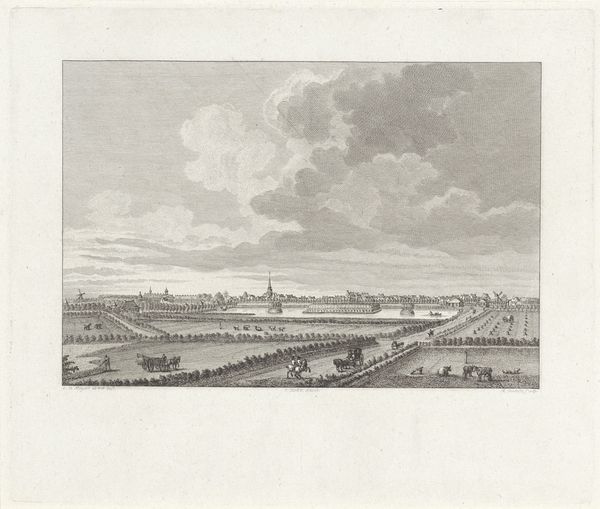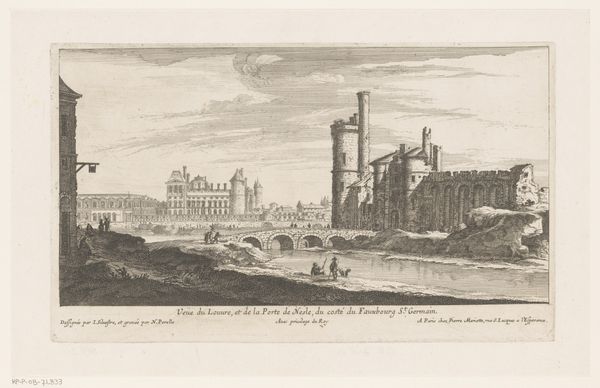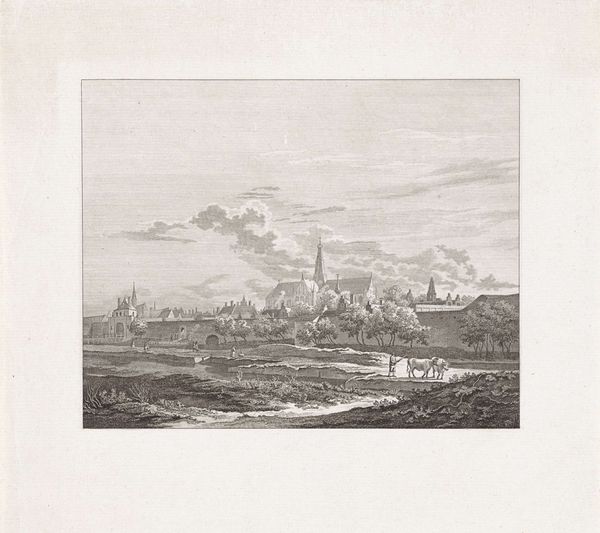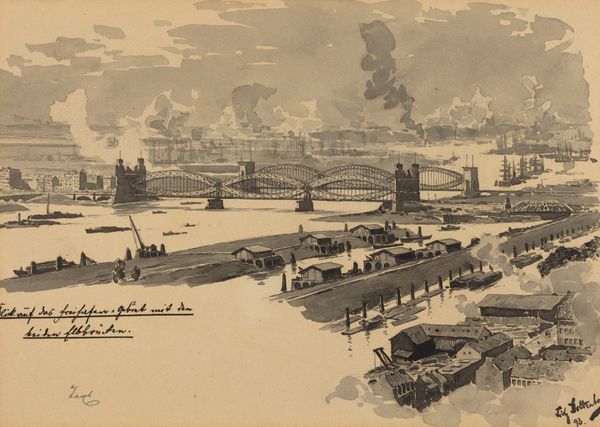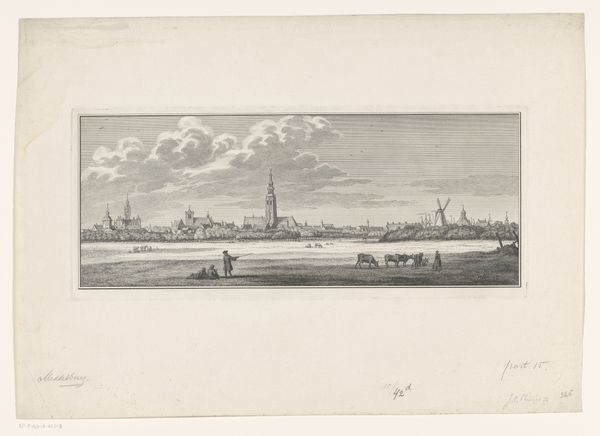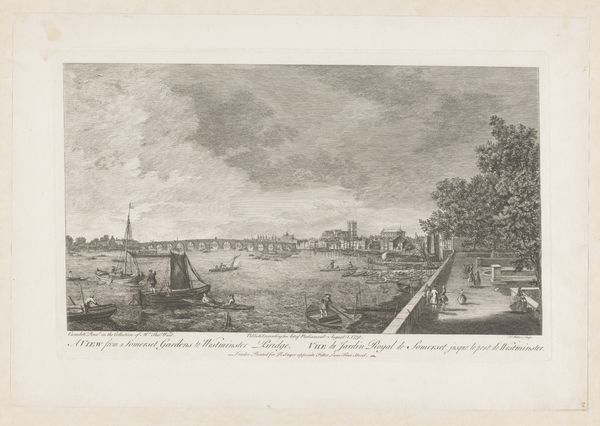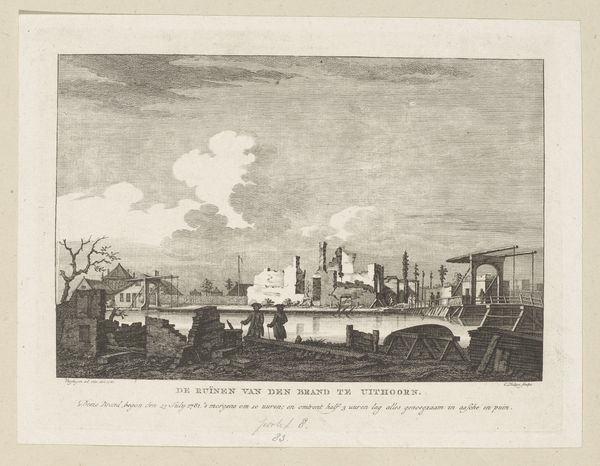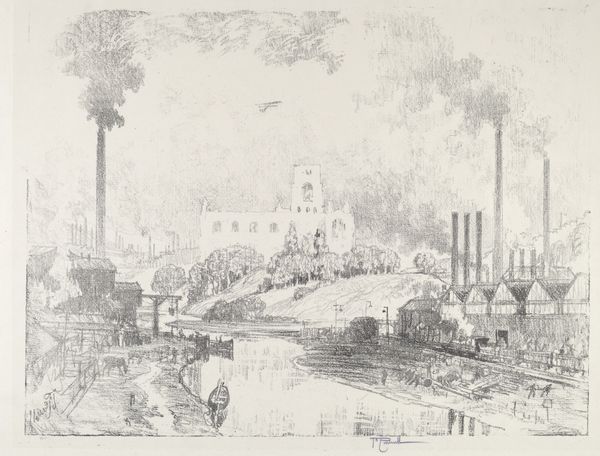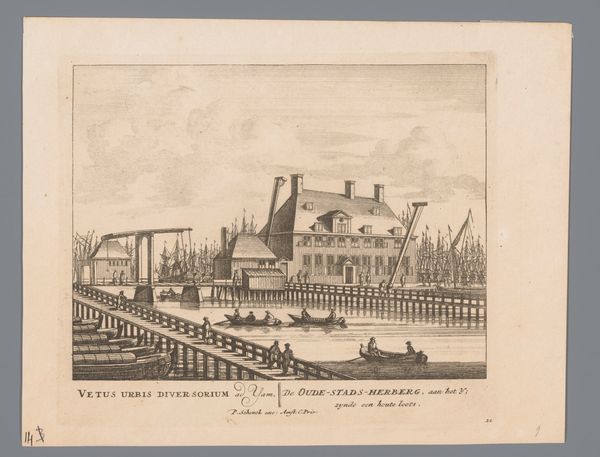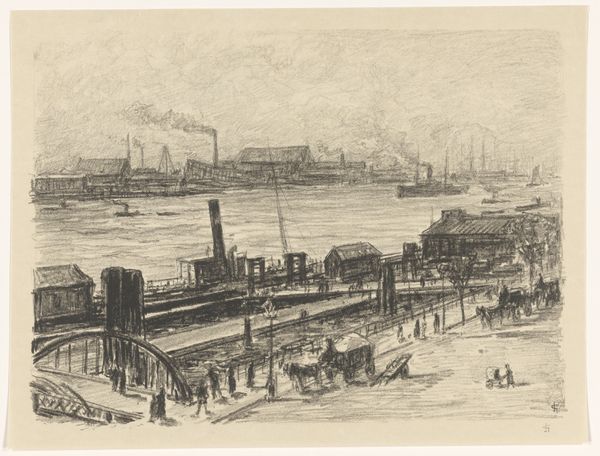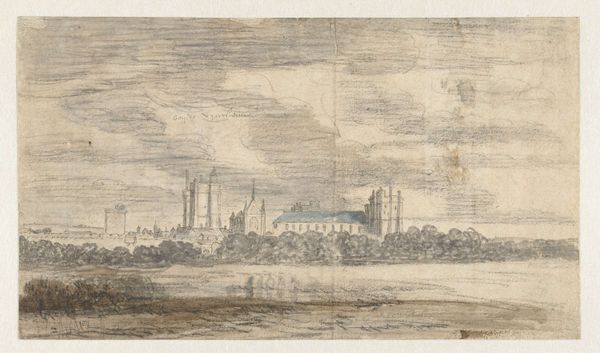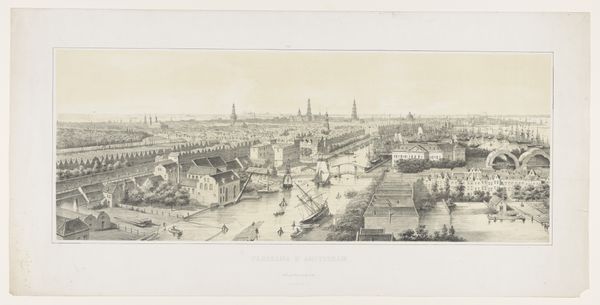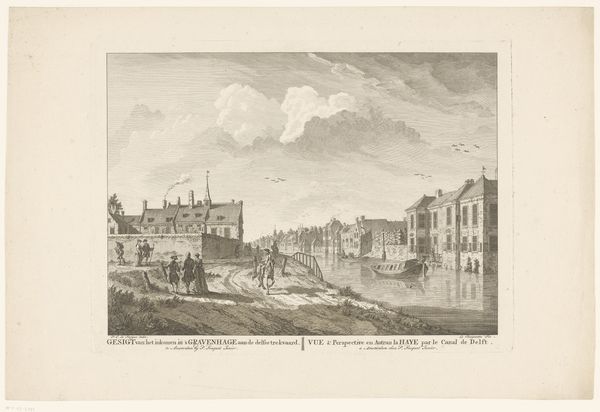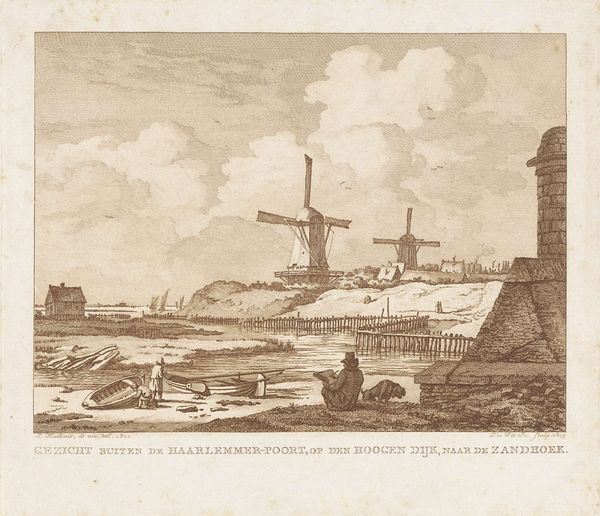
print, etching
# print
#
impressionism
#
etching
#
landscape
#
cityscape
#
realism
Dimensions: image: 36.6 × 61.5 cm (14 7/16 × 24 3/16 in.) sheet: 44 × 66.8 cm (17 5/16 × 26 5/16 in.)
Copyright: National Gallery of Art: CC0 1.0
Curator: Looking at this print by Maxime Lalanne titled "Paris in 1867: View from the Trocadéro", created in 1867, what is your initial reaction? Editor: A little somber, I think. Despite the overall bustling activity, the hazy sky and industrial smoke create a subdued atmosphere. Curator: That's an interesting point. For me, the smoke billowing from the factories and the crowded streets become potent symbols. Paris at this time was rapidly industrializing and modernizing under Haussmann's plans, an intense moment of transformation. How do you see those elements working together? Editor: I think there's tension between the older Paris, with its visible history, and the rising modernity represented by the factory smoke and sprawling developments. The image isn’t celebrating modernity unequivocally; it seems to question what is lost in this rapid evolution. We have to also recognize this landscape is actively being formed and reformed by and for a predominantly male ruling class and an emerging bourgeois identity. Curator: Absolutely. The plumes of smoke could symbolize the price of progress. Visually, it also adds depth, as the hazy atmosphere reminds us about the fleetingness of time. This perspective, the view from the Trocadéro, it suggests power, a mastery over the urban space. Editor: Do you think that smoke takes on any more layers of symbolic meaning beyond its mere industrial association, considering how visual representation and semiotics in urban spaces often carry symbolic weight, especially given gendered constructions of the built environment? Curator: Yes, certainly. In a Jungian sense, smoke can obscure clarity while signaling potential, representing transformation, or perhaps repressed emotions finally rising to the surface as society begins its evolution. What I like about this view, rendered as an etching, is its sharp depiction of the urban change, balanced with this layer of potential symbolic interpretation. Editor: And the human figures? Almost lost in the immensity of the city, seemingly swept up and subsumed within the larger system of capital. Curator: That is a stark and vital observation that reminds me of Baudelaire’s work and the notion of the flâneur… a sense of being both a part of and alienated from the modern urban experience. It feels as relevant today as it did then, perhaps even more so given the ever-expanding reach of contemporary urban capitalism. Editor: A sentiment definitely captured with this image that lingers and gives me cause to pause and reconsider the romanticized ideals of progress, inviting reflections on history’s undercurrents that are as urgent today. Curator: A compelling point of view that really challenges my thinking! Thanks for expanding how I look at this landscape.
Comments
No comments
Be the first to comment and join the conversation on the ultimate creative platform.
